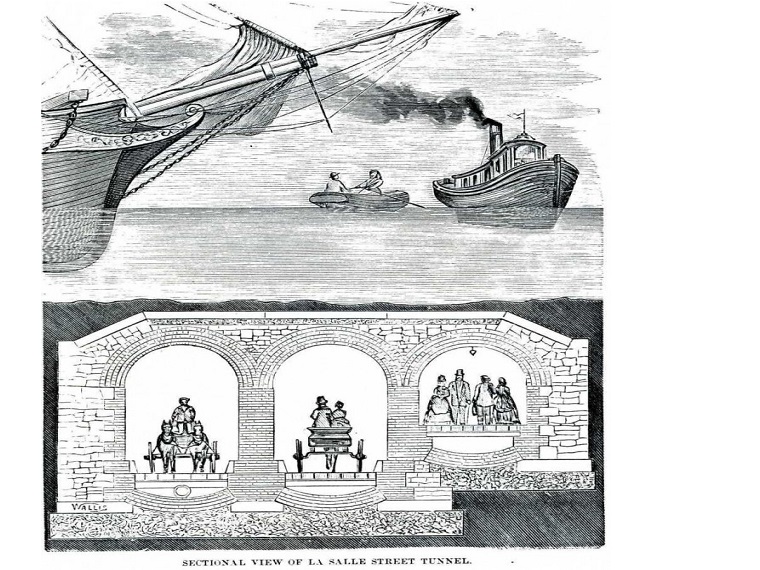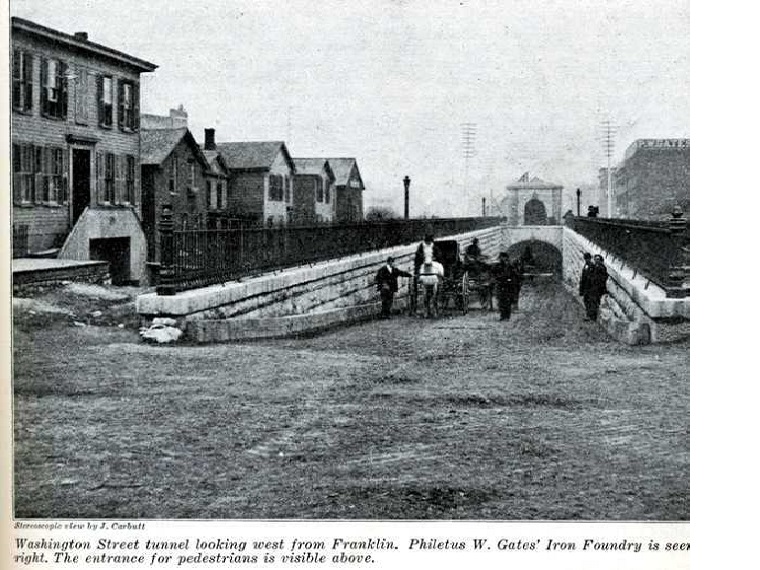People rarely think much about what is under their feet, yet much of what makes a modern city livable is hidden underground. This impressive underground infrastructure includes water to drink and bathe in, sewers to take away smelly and unhealthy waste, gas to heat our houses, electricity to light and cool us, and telecommunications to keep us connected.
Chicago’s hard clay and limestone bedrock make digging tunneling easy. These materials are relatively easy to cut, but stable and waterproof. The clay tunnels need only a few layers of brick or concrete for durability. Tunnels through the limestone bedrock may need no finishing. Additional advantages of tunnels include minimal disruption during construction and maximum use of scarce real estate.
The first major tunnel project was dug under Lake Michigan to a water intake two miles out in 1864-1866. The Washington Street traffic tunnel under the Chicago River followed in 1869. These underwater projects avoided the shipping and ice that often damaged bridges. Emboldened by these early successes, Chicago’s engineers kept on digging away creating thousands of miles of underground structures.
Search our catalog for more information on Chicago tunnels.





Add a comment to: Early Tunnels: Underground Chicago